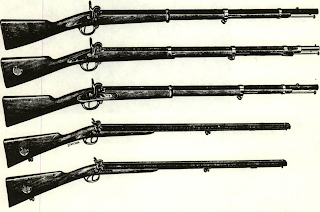Accordingly, conferences were set up, through the
While Meade charitably made it appear that the
Curiously, the N.R.A. made possible the sale of
Actually, the sentiment is hardly uniform within
Meanwhile, the production of replica arms continues.
In this he is but returning to the fold, for Liege
While Meade charitably made it appear that the
Curiously, the N.R.A. made possible the sale of
Actually, the sentiment is hardly uniform within
Meanwhile, the production of replica arms continues.
In this he is but returning to the fold, for Liege
FUSILS A CHARGER PAR LA BOUCHE a 1 et 2 coups.
 |
Noted painter, William Harnett,
|

Comments
Post a Comment